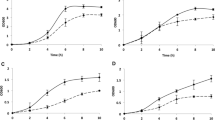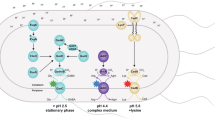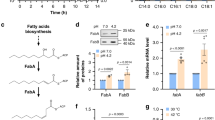Abstract
SELENIUM compounds are usually considered harmful, but evidence is mounting that the element may have other biological effects. The fact that a few higher plants can accumulate relatively large amounts of selenium has been known since the 1930's; several species of Astragalus (vetch) have actually been proved to require traces of selenium for normal development1. More recently, animals deficient in vitamin E as well as grazing animals suffering from white muscle disease were found to improve after treatment with selenium in quantities 0.1–0.01 less than the usual toxic amounts2,3. It has been suggested that selenium at these concentrations may well be an essential element for animals3.
This is a preview of subscription content, access via your institution
Access options
Subscribe to this journal
Receive 51 print issues and online access
$199.00 per year
only $3.90 per issue
Buy this article
- Purchase on Springer Link
- Instant access to full article PDF
Prices may be subject to local taxes which are calculated during checkout
Similar content being viewed by others
References
Trelease, S. F., and Beath, O. A., Selenium (pub. by the authors, New York, 1949).
Schultze, M. O., Ann. Rev. Biochem., 29, 391 (1960).
Schwarz, K., Fed. Proc., 20, 666 (1961).
Shrift, A., Bot. Rev., 24, 550 (1958).
Mautner, H. G., and Günther, W. H., Biochim. Biophys. Acta, 36, 561 (1959).
Cowie, D. B., and Cohen, G. N., Biochim. Biophys. Acta, 26, 252 (1957).
Lipman, J. G., and Waksman, S. A., Science, 57, 60 (1923).
Leifson, E., Amer. J. Hyg., 24, 423 (1936).
Levine, V. E., J. Bact., 10, 217 (1925).
Brenner, W., Jahrb. Wissensch. Bot., 19, 95 (1916).
Shrift, A., Nevyas, J., and Turndorf, S., Plant Physiol., 36, 502 (1961).
Shrift, A., Nevyas, J., and Turndorf, S., Plant Physiol., 36, 509 (1961).
Anderson, E. H., Proc. U.S. Nat. Acad. Sci., 32, 120 (1946).
Shrift, A., Amer. J. Bot., 41, 223 (1954).
Fels, I. G., and Cheldelin, V. H., Arch. Biochem., 22, 323 (1949).
Pengra, R. M., and Berry, E. C., Proc. So. Dakota Acad. Sci., 32, 120 (1953).
Postgate, J. R., J. Gen. Microbiol., 6, 128 (1952).
Weissman, G. S., and Trelease, S. F., Amer. J. Bot., 42, 489 (1955).
Author information
Authors and Affiliations
Rights and permissions
About this article
Cite this article
SHRIFT, A., KELLY, E. Adaptation of Escherichia colito Selenate. Nature 195, 732–733 (1962). https://doi.org/10.1038/195732a0
Issue Date:
DOI: https://doi.org/10.1038/195732a0
Comments
By submitting a comment you agree to abide by our Terms and Community Guidelines. If you find something abusive or that does not comply with our terms or guidelines please flag it as inappropriate.



